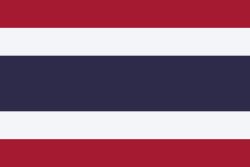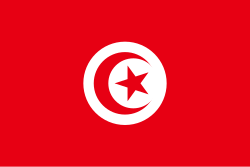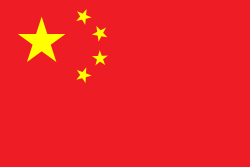Shō Shimabukuro
| Shō Shimabukuro | |||||||||||||
 | |||||||||||||
| Shimabukuro 2023 in der Qualifikation zu Wimbledon | |||||||||||||
| Nation: | |||||||||||||
| Geburtstag: | 30. Juli 1997 (27 Jahre) | ||||||||||||
| Größe: | 183 cm | ||||||||||||
| Gewicht: | 75 kg | ||||||||||||
| Spielhand: | Rechts, beidhändige Rückhand | ||||||||||||
| Preisgeld: | 562.374 US-Dollar | ||||||||||||
| Einzel | |||||||||||||
| Karrierebilanz: | 4:8 | ||||||||||||
| Höchste Platzierung: | 135 (2. Oktober 2023) | ||||||||||||
| Aktuelle Platzierung: | 198 | ||||||||||||
| |||||||||||||
| Doppel | |||||||||||||
| Karrierebilanz: | 2:1 | ||||||||||||
| Höchste Platzierung: | 376 (16. September 2024) | ||||||||||||
| Aktuelle Platzierung: | 713 | ||||||||||||
| Letzte Aktualisierung der Infobox: 10. Februar 2025 | |||||||||||||
| Quellen: offizielle Spielerprofile bei der ATP/WTA (siehe Weblinks) | |||||||||||||
Shō Shimabukuro (japanisch 島袋 将Shimabukuro Shō; * 30. Juli 1997 in Gifu) ist ein japanischer Tennisspieler.
Karriere
Shimabukuro spielte bis 2015 nur wenige Turniere auf der ITF Junior Tour. In der Jugend-Rangliste erreichte er mit Rang 976 seine höchste Notierung.
Bei den Profis spielte Shimabukuro sein erstes Turnier 2015. 2016 gewann er die ersten Punkte im Einzel und 2017 im Doppel für die Weltrangliste. 2017 stand er auch jeweils das erste Mal in den Top 1000. 2018 spielte er für Japan bei den Asienspielen im Doppel, wo er die Bronzemedaille gewann. 2019 war er zudem bei der Sommer-Universiade aktiv. Auch hier stand die Bronzemedaille im Doppel zu Buche. Auch auf der regulären Tour feierte er erste Erfolge. Auf der drittklassigen ITF Future Tour gewann er seinen ersten Titel und stand in zwei weiteren Finals. Darüber hinaus stand er auf der ATP Challenger Tour, die höher dotiert ist, in Yokkaichi erstmals im Halbfinale, nachdem er zuvor noch nie das Hauptfeld erreicht hatte. Das Jahr schloss er auf Rang 446 ab. 2020 und 2021 zog er im Einzel in keine Endspiele ein, lediglich im Doppel gewann er seinen dritten Future-Titel. Dazu kam das Debüt für die japanische Davis-Cup-Mannschaft, für die er im Doppel gewinnen konnte.
2022 war für Shimabukuro nicht nur das erfolgreichste auf der Future Tour – er gewann zwei Titel – sondern er schaffte es in Bangkok Yokohama auch ins Halbfinale von Challengers. Sein Debüt auf der ATP Tour gab er in Tokio, wo er sich durch die Qualifikation kämpfte und ins Hauptfeld einzog. Dort verlor er zum Auftakt Kamil Majchrzak in zwei Sätzen. Im Doppel machte er durch zwei Challenger-Halbfinals ebenfalls Plätze gut. Das Jahr beendete er im Einzel auf Platz 270 und im Doppel auf Rang 520, beides Bestwerte.
Erfolge
| Legende (Anzahl der Siege) |
| Grand Slam |
| ATP World Tour Finals |
| ATP World Tour Masters 1000 |
| ATP World Tour 500 |
| ATP World Tour 250 |
| ATP Challenger Tour (3) |
Einzel
Turniersiege
| Nr. | Datum | Turnier | Belag | Finalgegner | Ergebnis |
|---|---|---|---|---|---|
| 1. | 22. Januar 2023 | Hartplatz | 6:2, 7:5 | ||
| 2. | 20. Mai 2023 | Sand | 6:4, 6:4 | ||
| 3. | 8. September 2024 | Hartplatz | 6:4, 6:4 |
Weblinks
- ATP-Profil von Shō Shimabukuro (englisch)
- ITF-Profil von Shō Shimabukuro (englisch)
- ITF-Junioren-Profil von Shō Shimabukuro (englisch)
- Davis-Cup-Statistik von Shō Shimabukuro (englisch)
| Personendaten | |
|---|---|
| NAME | Shimabukuro, Shō |
| ALTERNATIVNAMEN | 島袋 将 (japanisch) |
| KURZBESCHREIBUNG | japanischer Tennisspieler |
| GEBURTSDATUM | 30. Juli 1997 |
| GEBURTSORT | Gifu, Japan |
Auf dieser Seite verwendete Medien
Pictograms of Olympic sports - Tennis. This is unofficial sample picture. Images of official Olympic pictograms for 1948 Summer Olympics and all Summer Olympics since 1964 can be found in corresponding Official Reports.
Chinese Taipei Olympic Flag. According to the official website of Chinese Taipei Olympic Committee, Blue Sky(circle) & White Sun(triangles) above the Olympic rings is neither the National Emblem of the Republic of China, nor the Party Emblem of Kuomintang (KMT), but a design in between, where the triangles do not extend to the edge of the blue circle, as registered at International Olympic Committee in 1981 and digitally rendered in 2013. Besides, the blue outline of the five-petaled plum blossom is broader than the red one. Moreover, the CMYK code of the blue one and the Blue Sky & White Sun is "C100-M100-Y0-K0", and different from the Olympic rings (C100-M25-Y0-K0). Note that it's the only version recognized by IOC.
Chinese Taipei Olympic Flag. According to the official website of Chinese Taipei Olympic Committee, Blue Sky(circle) & White Sun(triangles) above the Olympic rings is neither the National Emblem of the Republic of China, nor the Party Emblem of Kuomintang (KMT), but a design in between, where the triangles do not extend to the edge of the blue circle, as registered at International Olympic Committee in 1981 and digitally rendered in 2013. Besides, the blue outline of the five-petaled plum blossom is broader than the red one. Moreover, the CMYK code of the blue one and the Blue Sky & White Sun is "C100-M100-Y0-K0", and different from the Olympic rings (C100-M25-Y0-K0). Note that it's the only version recognized by IOC.







